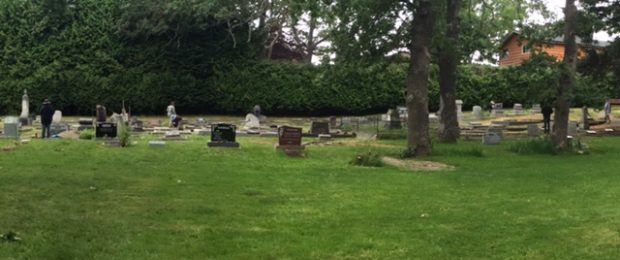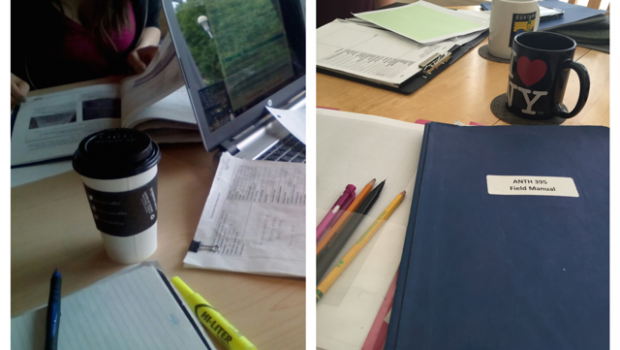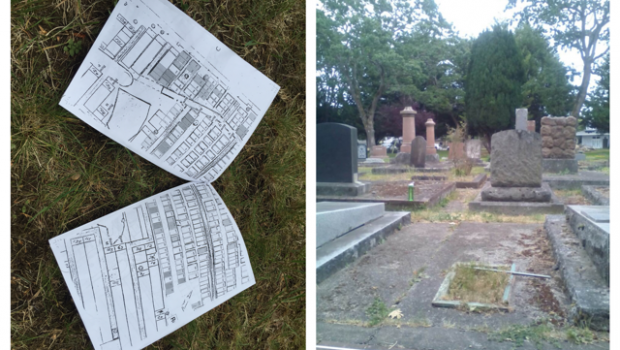On Tuesday of this week, students in ANTH395 were subjected to a field quiz, to see how well they understood the fieldwork they were conducting. Here are Maya and Vanessa’s thoughts on the quiz…
Our first out-of-classroom quiz: How to tackle a field quiz and what to expect

Students spread across the cemetery, confidently writing their quizzes. (Photo by Vanessa Tallarico, 2016)
Study Time?
Trying to figure out how to “study” for our first field quiz was an interesting process to say the least. Being so accustomed to lecture style courses and the standard, tedious classroom tests that go with them, we had no idea what to expect. After numerous trial and error attempts at forming a study group and scanning our field manuals for potential questions, we realized something; the best way to study for a field quiz is not to study for the field quiz! Before we lose you, hear us out. While huddled around our study table at Uvic desperately trying to be good students and do our time, we realized that we already knew everything that could be on the quiz! Physically being at the cemetery throughout the duration of the field course, and learning through hands on experience is the only real way to prepare for a field quiz. Since we’ve all been devoted to immersing ourselves in monument recording work for the last few weeks, we decided to calm down, take a step back, and trust that Dr. McGuire and our T.A, Jeremy had obviously taught us well. After writing the quiz, we think we were definitely right on that one! For the most part, we felt well prepared, confident, and proud that we had learned so much in the course of a few weeks.

Two group study attempts that did not turn out as expected (Photos by Maya Cowan and Vanessa Tallarico, 2016)
The Quiz:
The actual field test ended up being both easier and harder than we expected. Since there was no GPS mapping required, we couldn’t have done too poorly, and there were no extreme measurements that normally take us three sets of hands.
Probably the most difficult part, and it was something that we couldn’t have studied for unless we had gone to the cemetery and specifically learned all of this, was making sure we were at the right plot. Coming from Section A, which has a total of 13 plots (3 unoccupied), plot numbers like S69 and F34 were a bit of a headache. Luckily we got some practice working with damaged monuments in Section D the past few classes, and the damage assessment forms looked less foreign than they once did. You know you’ve spent too much time looking at damaged monuments when you’re walking downtown and have to point out the pollution deposits on an old building to your friend.
One helpful thing, which continued to prove useful even in the afternoon after the field quiz, was the map printout that Dr. McGuire gave us to complete the tests. Not having to find and wait in line for the big laminated map every time we have to check a plot number (all the time) is definitely a bonus.

The handy map we were provided with (left) and a picture taken while counting plots (right) (Photos by Vanessa Tallarico, 2016)
We suppose we won’t really know until we get our marks back, but the field quiz felt like an overall success.